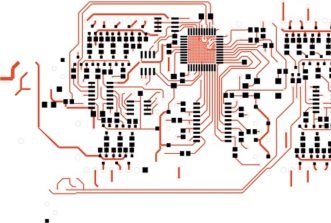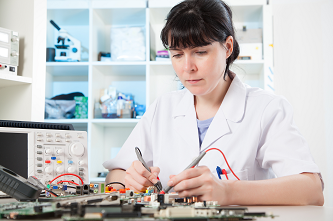This website uses cookies so that we can provide you with the best user experience possible. Cookie information is stored in your browser and performs functions such as recognising you when you return to our website and helping our team to understand which sections of the website you find most interesting and useful.
Micro Batteries to Power Mini Robots
The latest innovation in battery technology has arrived in the form of a minuscule power source, measuring just 0.1 millimeters in length and 0.002 millimeters in thickness — approximately the width of a human hair. This groundbreaking battery has the remarkable ability to extract oxygen from the air and utilize it to oxidize zinc, generating a current with a potential of up to 1 volt. Researchers have demonstrated that this level of power is adequate to operate small circuits, sensors, or actuators, marking a significant advancement in the field of robotics.
Michael Strano, the Carbon P. Dubbs Professor of Chemical Engineering at MIT and the senior author of the study, expressed his enthusiasm about the potential impact of this new technology on robotics. He stated, “We think this is going to be very enabling for robotics. We’re building robotic functions onto the battery and starting to put these components together into devices.” Leading the research are Ge Zhang, a PhD candidate at MIT, and Sungyun Yang, an MIT graduate student, who are credited as the lead authors of the paper published in Science Robotics.
For years, Strano’s laboratory has been dedicated to developing miniature robots capable of sensing and responding to stimuli in their surroundings. A key obstacle in creating such tiny robots has been ensuring they possess sufficient power to function effectively. While previous studies have demonstrated the use of solar power to energize microscale devices, a major drawback is the constant requirement for a laser or light source to be directed at the robots. These externally powered devices, known as “marionettes,” are limited in their autonomy. By integrating a battery within these small robots, they could potentially operate independently over greater distances.
Strano elaborated on the necessity of a battery for autonomous robots, stating, “The marionette systems don’t really need a battery because they’re getting all the energy they need from outside. But if you want a small robot to be able to get into spaces that you couldn’t access otherwise, it needs to have a greater level of autonomy. A battery is essential for something that’s not going to be tethered to the outside world.”
To enhance the autonomy of robots, Strano’s team opted to utilize a zinc-air battery, renowned for its extended lifespan compared to other battery types due to its high energy density. Typically found in hearing aids, these batteries were integrated into the design of the new battery. Comprising a zinc electrode linked to a platinum electrode within a SU-8 polymer strip commonly used in microelectronics, the battery operates by oxidizing zinc upon interaction with oxygen molecules, releasing electrons that flow to the platinum electrode, thereby generating a current.














